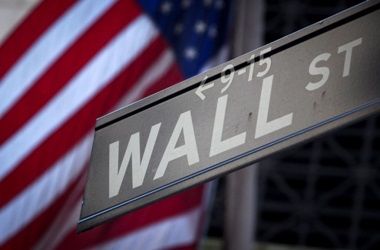Widespread conviction that the US economy will continue to outperform the rest of the developed world in 2015 has made the decoupling trade a dangerous place to be, according to analysts at Bank of America Merrill Lynch, who advocate a shift to more cautious rates and FX strategies for trading such expectations.
Net positioning data from the CFTC show that non-commercial net longs in the S&P 500 and the US dollar are sitting at one-year highs, while short positioning in crude oil is also at its most extreme level in a year.
“The collapse in oil prices over the past two months has provided a further boost to the US decoupling trade as lower energy prices have been viewed as good for US consumers, thus supportive for US equities and the US dollar,” notes David Woo, FX and rates strategist at BofA Merrill in a note to clients.
The strength of conviction for the decoupling trade intensified over the second half of 2014 as the dollar gained 12% against a basket of major currencies – its biggest six-month increase in over 30 years according to BofA Merrill research.
At the same time, US equities outpaced the wider market by an impressive margin. The S&P 500 climbed over 5% during the second half, while the MSCI All Country World Index ex-US shed almost 10%.
The biggest move was seen in oil markets with US Brent crude oil shedding almost 50% of its value in the second half to end 2014 at just US$56 per barrel.
Correlation spike
BofA Merrill notes that a heavy flows into both equities and the US dollar pushed correlation between the markets into positive territory, with that correlation hitting its most extreme level in over a decade last July.
Analysts remain positive on the US economy, but warn that current positioning makes the trade vulnerable, particularly given the recent uptick in equity volatility combined with 10-year Treasury yields edging back below 2%.
“One lesson from the past few years is that the right trade, when it becomes crowded, often becomes the wrong trade,” says Woo.
BofA Merrill analysts note a more cautious stance given the requirement for three separate legs of the trade to continue performing in a similar fashion to the extremes of the last two quarters.
“The trade may have limited room to advance in the short term as it seems unlikely that two legs of the trade (rising US dollar and falling energy) can continue without creating problems for the third leg of the trade (rising US equities),” notes Woo.
Defensive approach
To address the risk of a potential recoupling scenario and unwinding of the consensus trade that could take hold in the event of fourth quarter earnings disappointment, BofA Merrill analysts recommend a long Treasury versus Bunds strategy.
Yields on 10-year Treasuries currently trade at 1.978% while 10-year Bund yields are seen at just 0.5%. The near-150bp spread between the two represents a 25-year high, raising the likelihood of a mean reversion similar to that seen when the spread traded above 100bp in 1999 and 2005, Woo notes.
“If the ECB were to ease aggressively on January 22, Bund yields should have more upside than Treasury yields especially given the US dollar is likely to rise further attains the euro in this event,” notes Woo.
On the other hand, any disappointment from the ECB could trigger a risk sell-off in which Treasury yields have more room to fall.
“This means the trade could do well in either scenario of this upcoming decisive event,” Woo says.
In the FX market, BofA Merrill analysts note limited upside in near-term US dollar/yen performance against a backdrop of higher equity volatility that has seen the VIX index of S&P 500 volatility trade consistently above 17 since the start of the year.
They recommend the sale of three-month “one-touch” options with a barrier at 125 against the purchase of six-month options with the same barrier level to benefit from bullish long-term dollar expectations combined with the likelihood of limited upside in the short-term.
